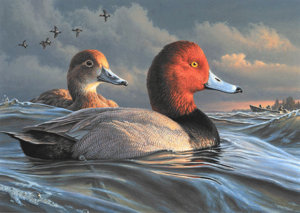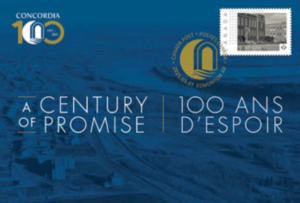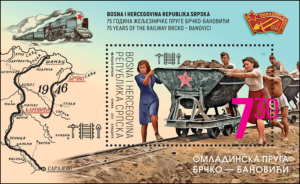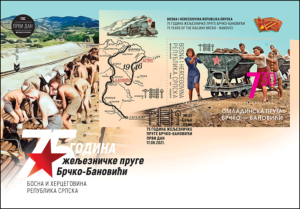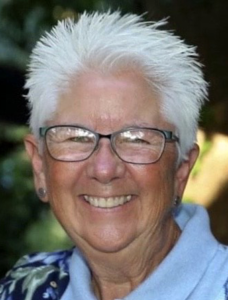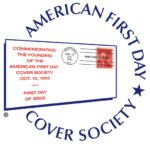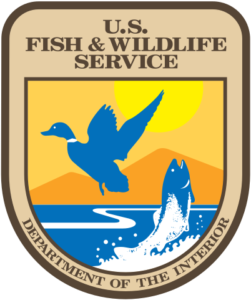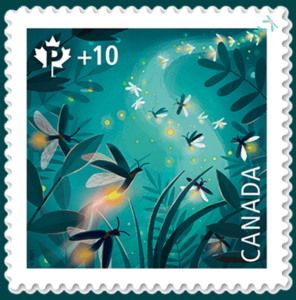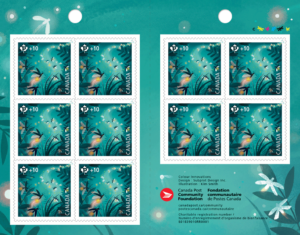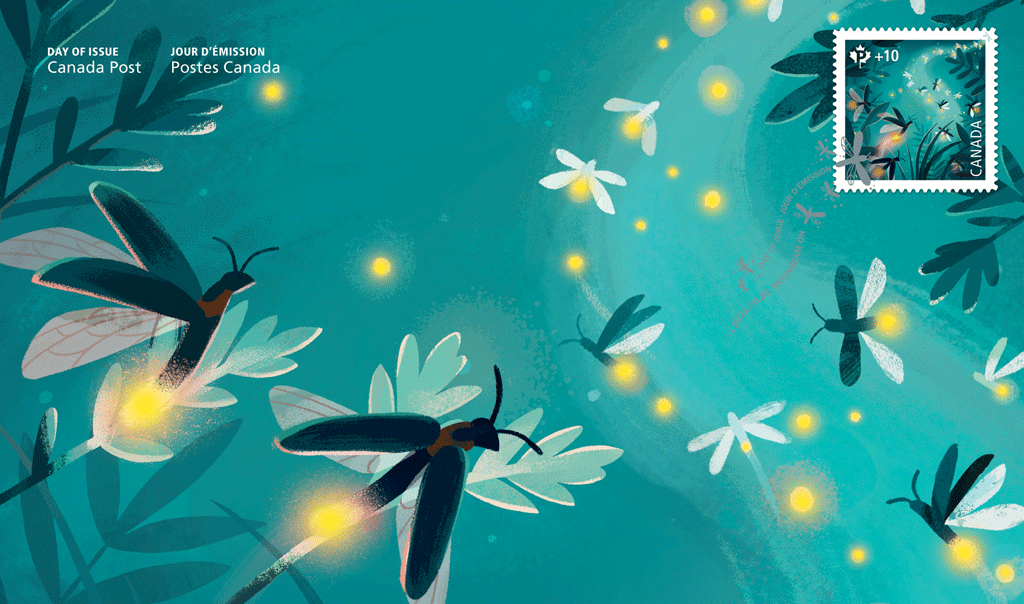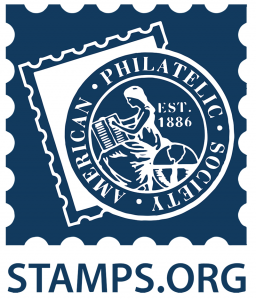Updated September 28, 2022:
[press release] [click on any of the pictures for larger versions]
Stamps capture Indigenous artists’ visions for truth and reconciliation
Four-stamp issue features work of First Nations, Inuit and Métis artists
OTTAWA – Canada Post unveiled [28 September] four new stamps that encourage awareness and reflection on the tragic legacy of Indian residential schools and the need for 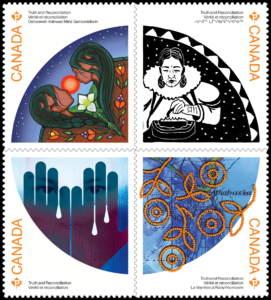 healing and reconciliation. The stamps – being released September 29 in connection with the National Day for Truth and Reconciliation on September 30 – are the first in an annual series showcasing the visions of First Nations, Inuit and Métis artists for the future of truth and reconciliation.
healing and reconciliation. The stamps – being released September 29 in connection with the National Day for Truth and Reconciliation on September 30 – are the first in an annual series showcasing the visions of First Nations, Inuit and Métis artists for the future of truth and reconciliation.
Between the 1830s and 1990s, more than 150,000 First Nations, Inuit and Métis children across Canada were taken from their families and sent to federally created Indian residential schools. They were stripped of their languages, cultures and traditions. Children endured unsafe conditions, disease, and physical, sexual and emotional abuse while at the church-run schools. Thousands of them never made it home. Residential school Survivors continue to experience trauma from their time at the institutions, and that has been passed down to successive generations.
The four-stamp issue will help Canadians reflect on the injustices and trauma that have been inflicted on generations of First Nations, Inuit and Métis Peoples and calls attention to the responsibility all Canadians have in reconciliation. The stamps are cancelled in Brantford, Ontario, the site of the Mohawk Institute, whose opening in the early 1830s made it Canada’s first Indian residential school. The Indigenous languages found on the stamps represent the language and dialect of the artists who created the work.
Jackie Traverse, First Nations artist (Lake St. Martin, Manitoba) – Anishinaabe, Ojibwe
“This image represents seeds of change. Here we have man and woman, the Elders, their  children and their grandchildren. I’ve put the (unofficial) national flower, the bunchberry, in the centre to represent Canada, with the roots from the seeds reaching to the past. For all of us to experience a good harvest we need to share the sun, water and the land. This is how we bring forth good crops and ensure everyone has the harvest of tomorrow.”
children and their grandchildren. I’ve put the (unofficial) national flower, the bunchberry, in the centre to represent Canada, with the roots from the seeds reaching to the past. For all of us to experience a good harvest we need to share the sun, water and the land. This is how we bring forth good crops and ensure everyone has the harvest of tomorrow.”
Traverse’s mother died at a young age and her siblings were apprehended in the Sixties Scoop. She grew up in one of Winnipeg’s toughest neighbourhoods. Traverse is a multi-disciplined Indigenous artist who works in several media, from oil and acrylic paintings to mixed media, stop-motion animation and sculpture. She draws inspiration from her Indigenous culture and her experiences as an Indigenous woman living in Winnipeg. Her work speaks to the realities of being an Indigenous woman.
Gayle Uyagaqi Kabloona, Inuit artist – Qamani’tuaq (Baker Lake), Nunavut
“I believe each group within Canada has a different responsibility for reconciliation. For Indigenous People, our responsibility is to ourselves and to others within our communities: 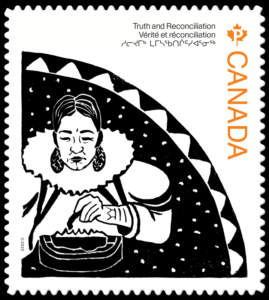 learning or passing on our language and culture that was attacked only one generation ago. I created a woman lighting a qulliq (QUL-liq), the traditional Inuit stone lamp used for heat and light to signify caretaking. This woman is carrying on in her culture as she has always done, taking care of herself and others and healing.”
learning or passing on our language and culture that was attacked only one generation ago. I created a woman lighting a qulliq (QUL-liq), the traditional Inuit stone lamp used for heat and light to signify caretaking. This woman is carrying on in her culture as she has always done, taking care of herself and others and healing.”
Originally from Baker Lake, Nunavut, Kabloona comes from a family of renowned Inuit artists. Art is how she connects with others within her culture, showcases her Inuit heritage, and expresses her Indigenous identity. Kabloona’s work puts a modern take on traditional Inuit imagery, and strong women frequently make appearances in her art. She co-founded a small group ceramics studio and has taught art as therapy at an addictions healing centre for Inuit, located in Ottawa. Last year, Kabloona was awarded a residency at the Art Gallery of Guelph, working with an Inuit curator, and created a new piece to be shown alongside her grandmother’s and great-grandmother’s artwork from the gallery’s collection.
Kim Gullion Stewart, Métis artist – Athabasca, Alberta (currently lives in Pinantan Lake, British Columbia)
“Flowers in Métis art remind people to live in a symbiotic way with land, waterways, ecosystems and one another. In this piece I have placed beaded flowers on top of contour lines representing the Rocky Mountains, twisty lines for rivers and dashes demarking  political territories. While maps like this one are a two-dimensional record of historical process and places, they are incomplete until they include elements that are important to the people who are Indigenous on this continent.”
political territories. While maps like this one are a two-dimensional record of historical process and places, they are incomplete until they include elements that are important to the people who are Indigenous on this continent.”
Gullion Stewart was born in Athabasca, Alberta. Her father’s heritage connects her to the Métis homeland of Red River, Man. She creates metaphorical meaning by connecting Métis cultural art forms (hide tanning, beading, quillwork) with contemporary and graphic art forms. In her art, she searches to uncover the depths of her Métis identity and learn Métis knowledge systems that have been hidden, lost or adapted as a survival mechanism. She is inspired by what Métis leader Louis Riel (1844-85) once said: “My people will sleep for 100 years, but when they awake it will be the artists who give them their spirit back.”
Blair Thomson, artist and graphic designer
“A pair of bold hands are held over the eyes and human face. Intended to be cross-representative — those of Indigenous Peoples/Survivors, covering their face in sadness, pain, memories, and those of the settler, masking their view of reality and shame. Tears 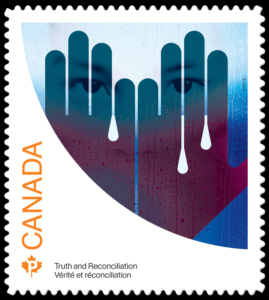 stream from between the fingers. The background further connects to the school windows, looking out and dreaming of home. The eyes looking out from behind the hands reinforce the message that settlers must ‘never look away again.’”
stream from between the fingers. The background further connects to the school windows, looking out and dreaming of home. The eyes looking out from behind the hands reinforce the message that settlers must ‘never look away again.’”
Thomson is founder and creative director of Believe in, a design practice with studios in Canada and the United Kingdom. A harmony between strategic foundation, unique ideas and beautiful outcomes lies at the heart of his approach and creative processes. His work is multi-award winning and has been featured in many leading design publications worldwide. Thomson is the collector, archivist and historian responsible for Canada Modern (an archive of modernist, Canadian graphic design from 1960-85).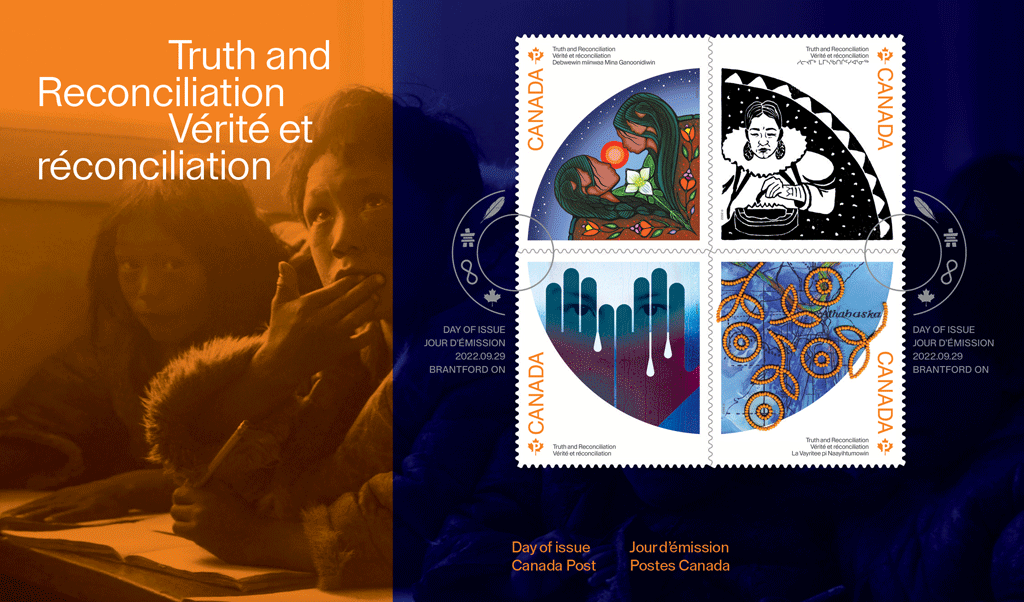
Stamps and collectibles are available at canadapost.ca and postal outlets across Canada.
[en Francais pour les médias d’information]
Timbres illustrant les visions d’artistes autochtones sur la vérité et la réconciliation
Émission de quatre timbres mettant en vedette des œuvres d’artistes inuit, métis et des Premières Nations
OTTAWA – Aujourd’hui, Postes Canada a dévoilé quatre nouveaux timbres qui suscitent sensibilisation et réflexion sur l’histoire tragique des pensionnats autochtones et le besoin  de guérison et de réconciliation. Ces timbres seront émis le 29 septembre, la veille de la Journée nationale de la vérité et de la réconciliation, et constituent le premier volet d’une série annuelle illustrant la vision d’artistes inuit, métis et des Premières Nations sur la vérité et la réconciliation.
de guérison et de réconciliation. Ces timbres seront émis le 29 septembre, la veille de la Journée nationale de la vérité et de la réconciliation, et constituent le premier volet d’une série annuelle illustrant la vision d’artistes inuit, métis et des Premières Nations sur la vérité et la réconciliation.
Des années 1830 à 1990, plus de 150 000 enfants inuit, métis et de Premières Nations de partout au pays ont été arrachés des bras de leur famille pour être envoyés dans des pensionnats autochtones créés par le gouvernement fédéral et dirigés par le clergé. Des milliers d’entre eux n’en sont jamais revenus. Dans ces établissements aux conditions non sécuritaires et propices à la maladie, on leur interdisait de parler leur langue maternelle. En plus d’être dépouillés de leur culture et de leurs traditions spirituelles, ces enfants ont subi des sévices physiques, sexuels et émotionnels, dont les traumatismes se font encore sentir chez les survivants et leur descendance.
Cette émission de quatre timbres invite les membres de la population à réfléchir aux injustices et aux traumatismes vécus par des générations de Premières Nations, d’Inuit et de Métis, et à assumer leurs responsabilités en ce qui a trait à la réconciliation. Les timbres sont oblitérés à Brantford, en Ontario, là où était situé le Mohawk Institute, dont l’ouverture au début des années 1830 en a fait le premier pensionnat autochtone du Canada. Par ailleurs, les timbres comportent des mots dans les langues traditionnelles et les dialectes régionaux des artistes qui ont créé les illustrations.
Jackie Traverse, artiste des Premières Nations (Lake St. Martin, Manitoba) – Anishinaabe, ojibwée
« Cette illustration représente l’espoir du changement. On peut y voir un homme et une femme (les aînées), leurs enfants et leurs petits-enfants. Au centre, le quatre-temps, notre  fleur nationale non officielle, avec ses racines qui plongent vers le passé. Elle représente le Canada. L’image nous rappelle que pour que nous puissions tous profiter de récoltes abondantes aujourd’hui et demain, nous devons partager le soleil, l’eau et la terre. »
fleur nationale non officielle, avec ses racines qui plongent vers le passé. Elle représente le Canada. L’image nous rappelle que pour que nous puissions tous profiter de récoltes abondantes aujourd’hui et demain, nous devons partager le soleil, l’eau et la terre. »
Jackie Traverse, artiste multidisciplinaire, grandit dans un des quartiers les plus durs de Winnipeg. Sa jeunesse est empreinte de tragédies : sa mère meurt très jeune, et ses frères et sœurs sont enlevés durant la rafle des années 1960. L’artiste utilise le multimédia, la peinture acrylique et à l’huile, l’animation image par image et la sculpture pour créer des œuvres dont elle puise l’inspiration dans sa culture et sa réalité de femme autochtone vivant à Winnipeg.
Gayle Uyagaqi Kabloona, artiste inuk – Qamani’tuaq (Baker Lake, Nunavut)
« Je crois que chaque groupe au Canada a une responsabilité différente en ce qui a trait à la réconciliation. En tant que peuples autochtones, nous avons une responsabilité envers  nous-mêmes et les gens de nos communautés : apprendre ou enseigner nos langues et nos cultures qui ont été attaquées il n’y a de cela qu’une génération. J’ai créé l’image d’une femme qui allume une kudlik [ou qulliq], une lampe de pierre traditionnelle inuite servant à se réchauffer et à s’éclairer, ici symbole de compassion. Cette femme vit selon sa culture comme elle l’a toujours fait, guérissant et prenant soin d’elle-même et des autres. »
nous-mêmes et les gens de nos communautés : apprendre ou enseigner nos langues et nos cultures qui ont été attaquées il n’y a de cela qu’une génération. J’ai créé l’image d’une femme qui allume une kudlik [ou qulliq], une lampe de pierre traditionnelle inuite servant à se réchauffer et à s’éclairer, ici symbole de compassion. Cette femme vit selon sa culture comme elle l’a toujours fait, guérissant et prenant soin d’elle-même et des autres. »
Originaire de Baker Lake, au Nunavut, Gayle Uyagaqi Kabloona est issue d’une famille d’artistes inuit renommés. L’art lui permet de faire briller son patrimoine inuit, de nouer des liens avec les autres en faisant rayonner sa culture et d’exprimer son identité autochtone. Elle aime moderniser un visuel traditionnellement inuit, et les vedettes de ses œuvres sont souvent des femmes fortes. Elle a fondé un atelier de céramique avec un petit groupe de personnes et enseigne l’art comme thérapie dans un centre de guérison pour les Inuit aux prises avec un problème de dépendance situé à Ottawa. L’an dernier, l’artiste a obtenu une résidence à l’Art Gallery of Guelph, en collaboration avec un conservateur inuit, et a produit une nouvelle création qui sera présentée aux côtés des œuvres de sa grand-mère et de son arrière-grand-mère.
Kim Gullion Stewart, artiste métisse – Athabasca, Alberta (elle vit à Pinantan Lake, en Colombie-Britannique)
« Les fleurs perlées rappellent la nécessité de vivre en symbiose avec la terre, les cours d’eau, les écosystèmes et les uns avec les autres. Sur ce motif, j’ai placé des fleurs perlées sur le tracé des montagnes Rocheuses, les lignes sinueuses qui représentent les  rivières et les pointillés qui délimitent les territoires politiques. Bien que les cartes comme celle-ci constituent une archive bidimensionnelle de lieux et de processus historiques, elles sont incomplètes jusqu’à ce qu’elles intègrent des éléments importants pour les peuples indigènes du continent. »
rivières et les pointillés qui délimitent les territoires politiques. Bien que les cartes comme celle-ci constituent une archive bidimensionnelle de lieux et de processus historiques, elles sont incomplètes jusqu’à ce qu’elles intègrent des éléments importants pour les peuples indigènes du continent. »
Kim Gullion Stewart est née à Athabasca, en Alberta. Les racines de son père la relient à la patrie métisse de la rivière Rouge, au Manitoba. Elle crée des significations métaphoriques en reliant des procédés artistiques métis (tannage des peaux, perlage, courtepointe) à des procédés artistiques contemporains et graphiques. Sa démarche artistique la pousse à puiser dans les profondeurs de son identité métisse et à réapprendre des systèmes de connaissances métis qui ont été cachés, perdus ou adaptés aux fins de survie. « Les miens dormiront pendant 100 ans, et quand ils se réveilleront, ce seront les artistes qui leur rendront leur esprit. » Cette citation de Louis Riel (1844-1885) est une grande source d’inspiration pour Kim Gullion Stewart.
Blair Thomson, artiste et graphiste
« L’illustration présente des mains superposées à un visage humain. Ces mains représentent deux points de vue : celui des colons, qui masquent la réalité et leur honte, et  celui des peuples autochtones, qui couvrent leur visage de tristesse, de douleur et de souvenirs. Des larmes coulent entre les doigts. L’arrière-plan rappelle les fenêtres des pensionnats à travers lesquelles les enfants regardaient en rêvant de retourner chez eux. Les yeux derrière les mains réitèrent que les colons ne doivent plus jamais détourner le regard. »
celui des peuples autochtones, qui couvrent leur visage de tristesse, de douleur et de souvenirs. Des larmes coulent entre les doigts. L’arrière-plan rappelle les fenêtres des pensionnats à travers lesquelles les enfants regardaient en rêvant de retourner chez eux. Les yeux derrière les mains réitèrent que les colons ne doivent plus jamais détourner le regard. »
Blair Thomson est le fondateur et le directeur de création de Believe in, une agence de conception dont les ateliers se situent au Canada et au Royaume-Uni. La démarche artistique de Monsieur Thomson cherche à harmoniser fondements stratégiques, idées uniques et résultats magnifiques. Maintes fois primées, ses œuvres ont également été publiées dans de nombreuses publications de conception de renom partout sur la planète. Il est le collectionneur, l’archiviste et l’historien responsable de Canada Moderne, une archive du graphisme canadien moderne de 1960 à 1985.
Les timbres et les articles de collection sont en vente sur postescanada.ca et dans les comptoirs postaux partout au pays.
[press release from September 27, 2021]
Canada Post to issue new Truth and Reconciliation stamp in 2022
Annual stamp issue to help raise awareness and support spirit of healing
OTTAWA – In keeping with its commitment to the principles of truth and reconciliation, Canada Post is working with Indigenous experts to issue a Truth and Reconciliation stamp in 2022 – the first in what will be an annual series.
 The stamp will be issued each year in connection with the National Day for Truth and Reconciliation, a new federal day of commemoration on September 30 (held for the first time in 2021) to honour the lost children and survivors of residential schools, their families and communities. The National Day for Truth and Reconciliation also coincides with Orange Shirt Day, a national movement that began in 2013 to honour the more than 150,000 First Nations, Inuit and Métis children who were sent to residential schools. The annual stamp issue will help raise awareness about Indigenous truth and reconciliation and support a spirit of healing.
The stamp will be issued each year in connection with the National Day for Truth and Reconciliation, a new federal day of commemoration on September 30 (held for the first time in 2021) to honour the lost children and survivors of residential schools, their families and communities. The National Day for Truth and Reconciliation also coincides with Orange Shirt Day, a national movement that began in 2013 to honour the more than 150,000 First Nations, Inuit and Métis children who were sent to residential schools. The annual stamp issue will help raise awareness about Indigenous truth and reconciliation and support a spirit of healing.
“Canada Post has a long history of sharing important Canadian stories through its stamp program. As a national storyteller and a public institution in virtually every community across Canada, we are committed to supporting the principles of truth and reconciliation,” says Doug Ettinger, President and CEO of Canada Post.
“As a country, it is part of our collective duty to acknowledge and honour the experiences of Indigenous peoples and to move forward together, in a spirit of healing. We hope this annual stamp series can help facilitate that.”
Canada Post has launched several initiatives and will launch others to mark the National Day for Truth and Reconciliation and support the principles of truth and reconciliation:
- On September 29 and 30, Canada Post employees are invited to wear orange shirts to work.
- Beginning in 2022, the Canada Post Community Foundation will award an annual Signature Grant of $50,000 to a national organization that offers programming anchored in the principles of truth and reconciliation and that supports Indigenous children and youth across the country. In 2021, the Foundation awarded 17 grants, totalling approximately $270,000, to programs that support Indigenous youth.
- Most of Canada Post’s operations, including all corporate post offices, will be closed September 30 to observe the National Day for Truth and Reconciliation.
- From September 24 to 30, Canada Post’s head office in Ottawa is being illuminated with orange light to commemorate the National Day for Truth and Reconciliation. [see photo above]
- In November 2020, the Corporation launched its Indigenous and Northern Reconciliation Strategy. To read more about the strategy, click here.
[en Francais pour les médias d’information]
Postes Canada émettra un nouveau timbre consacré à la vérité et à la réconciliation en 2022
L’émission annuelle permettra de sensibiliser le public à la cause dans un esprit de guérison
OTTAWA – Suivant son engagement à l’égard des principes de vérité et de réconciliation, Postes Canada collabore avec des experts autochtones pour émettre un timbre consacré à la vérité et à la réconciliation en 2022, le premier d’une série annuelle.
 Un timbre sera émis chaque année à l’occasion de la Journée nationale de la vérité et de la réconciliation, un nouveau jour férié fédéral de commémoration qui a lieu le 30 septembre (et tenu pour la première fois en 2021). Cette journée rend hommage aux enfants disparus et aux survivants des pensionnats autochtones, ainsi qu’à leurs familles et leurs communautés. Elle coïncide avec la Journée du chandail orange, un mouvement national qui a commencé en 2013 pour rendre hommage aux quelque 150 000 enfants inuit, métis et des Premières Nations qui ont été envoyés dans les pensionnats. Cette émission aidera à sensibiliser les gens à la vérité et à la réconciliation avec les Autochtones dans un esprit de guérison.
Un timbre sera émis chaque année à l’occasion de la Journée nationale de la vérité et de la réconciliation, un nouveau jour férié fédéral de commémoration qui a lieu le 30 septembre (et tenu pour la première fois en 2021). Cette journée rend hommage aux enfants disparus et aux survivants des pensionnats autochtones, ainsi qu’à leurs familles et leurs communautés. Elle coïncide avec la Journée du chandail orange, un mouvement national qui a commencé en 2013 pour rendre hommage aux quelque 150 000 enfants inuit, métis et des Premières Nations qui ont été envoyés dans les pensionnats. Cette émission aidera à sensibiliser les gens à la vérité et à la réconciliation avec les Autochtones dans un esprit de guérison.
« Postes Canada fait connaître depuis longtemps des histoires canadiennes importantes grâce à son programme des timbres-poste. À titre de conteur national et d’institution publique présente dans pratiquement toutes les collectivités du Canada, la Société est déterminée à appuyer les principes de vérité et de réconciliation », souligne Doug Ettinger, président-directeur général de Postes Canada.
« En tant que pays, nous avons le devoir collectif de reconnaître les expériences, de rendre hommage au vécu des peuples autochtones et d’aller de l’avant ensemble, dans un esprit de guérison. Nous espérons que cette série de timbres annuelle nous aidera à y parvenir. »
Postes Canada a lancé plusieurs initiatives et en lancera d’autres pour souligner la Journée nationale de la vérité et de la réconciliation, et pour appuyer les principes de vérité et de réconciliation :
- Les 29 et 30 septembre, le personnel de Postes Canada est invité à porter un chandail orange au travail.
- À compter de 2022, la Fondation communautaire de Postes Canada accordera une subvention annuelle Signature de 50 000 $ à un organisme national qui offre des programmes basés sur les principes de vérité et de réconciliation, et qui vient en aide aux enfants et aux jeunes autochtones partout au pays. En 2021, la Fondation a accordé 17 subventions totalisant environ 270 000 $ à des programmes qui soutiennent les jeunes Autochtones.
- Postes Canada suspendra la plupart de ses activités et tous les bureaux de poste de la Société seront fermés le 30 septembre afin de souligner la Journée nationale de la vérité et de la réconciliation.
- Du 24 au 30 septembre, le siège social de Postes Canada à Ottawa est illuminé en orange.
- En novembre 2020, la Société a lancé sa stratégie de réconciliation avec les communautés autochtones et du Nord. Apprenez-en davantage sur la stratégie.


